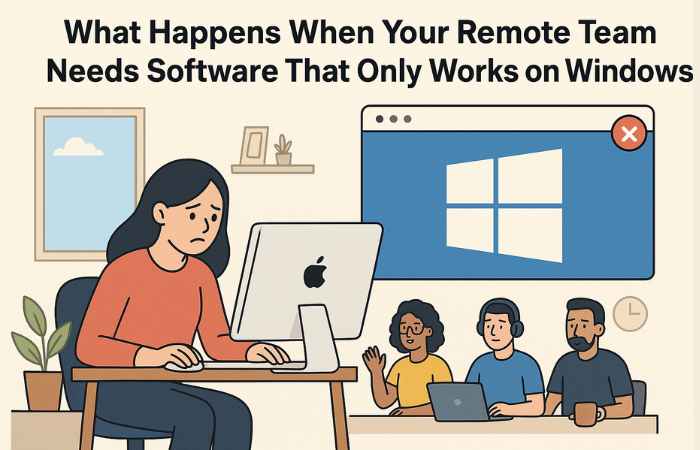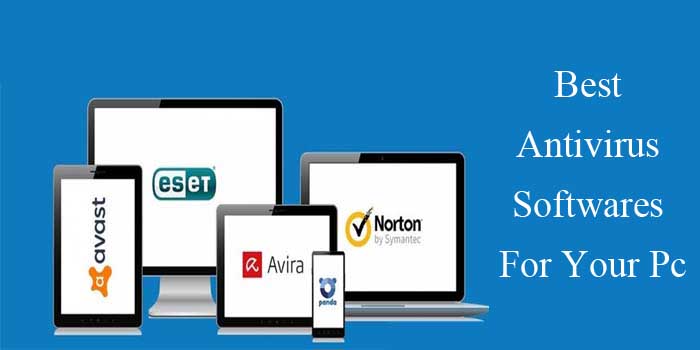Remote work solved a lot of problems, but it created plenty of new ones, too. One that catches companies off guard is the simple fact that not everyone uses the same operating system anymore. When half the marketing team runs Macs, the sales crew uses Chromebooks, and a few developers insist on Linux, things get complicated fast. The real headache starts when critical business software only runs on Windows.
This isn’t a minor inconvenience. It’s a full operational problem that affects productivity, budgets, and sometimes whether certain employees can even do their jobs from home.
The Windows-Only Software Problem Is Bigger Than Most People Think
Plenty of specialized business software never made the jump to cross-platform compatibility. Accounting systems, CAD programs, industry-specific databases, and custom internal tools built years ago—many of these applications were designed when everyone sat at a Windows PC in an office. The developers never anticipated a world where someone might need to access them from a MacBook at a coffee shop or an iPad on a job site.
Companies discover this problem in waves. First, it’s one person who can’t open a file. Then it’s a team that can’t access the inventory system. Before long, IT is fielding constant requests about why certain applications won’t work, and the answers aren’t simple.
The Obvious Solutions All Have Drawbacks
The first instinct is usually to buy Windows laptops for everyone who needs them. That solves the immediate problem but creates others. Now employees are managing two computers, which is clunky and frustrating. Some people end up with a work laptop and a personal laptop sitting side by side, switching between them throughout the day. It’s inefficient and honestly kind of ridiculous when you think about it.
Boot Camp used to be a popular workaround for Mac users, letting them restart into Windows when needed. But Apple’s shift to their own processors killed that option for newer machines. Parallels and similar virtual machine software can run Windows on a Mac, but performance suffers, especially with graphics-intensive applications. Plus, it requires purchasing a Windows license and maintaining a full operating system installation on each machine.
Some companies turn to remote desktop solutions or virtual private networks. These let users connect to a Windows machine back at the office or in a data center. The problem is that performance depends heavily on internet connection quality, and latency can make detailed work nearly impossible. There’s also the security concern of opening up remote connections to company networks.
Application Virtualization Changes the Equation
Here’s where things get more practical. Instead of forcing everyone onto Windows hardware or having them juggle multiple systems, businesses can deliver Windows applications through virtualization platforms. The applications still run on Windows servers, but users access them from whatever device they’re already using. Someone on a Mac sees the Windows app in a window on their screen, working pretty much the same as any native application would.
Platforms focused on this approach, such as those available through www.graphon.com, handle the technical complexity behind the scenes. The Windows environment lives on servers that IT teams manage centrally, while individual users just click an icon and start working. No dual-booting, no virtual machines eating up local resources, no shipping laptops back and forth.
The difference comes down to where the computing actually happens. With traditional approaches, the work occurs on the user’s device, which means that the device needs to be Windows-compatible. With application virtualization, the server does the heavy lifting. The user’s device is basically just a screen and keyboard, sending inputs and receiving images.
What This Means for Actual Work
Performance becomes much more consistent across different devices because the application isn’t dependent on local hardware specs. A newer MacBook and an older Chromebook can both run the same Windows software at similar speeds since they’re really just displaying what’s happening on the server. This matters more than it might sound at first—it means companies don’t need to maintain specific hardware requirements for different roles.
Updates and maintenance get simpler, too. Instead of pushing updates to dozens or hundreds of individual machines, IT updates the application once on the server, and everyone gets the new version immediately. Security patches happen the same way. There’s no waiting for employees to restart their computers or dealing with machines that haven’t been updated in weeks because someone was on vacation.
The cost structure shifts in ways that can work better for a lot of companies. Rather than buying Windows licenses for every employee and maintaining physical or virtual Windows installations everywhere, there’s a centralized infrastructure to manage. The upfront investment might be higher, but ongoing costs tend to be lower and more predictable.
The Limitations Worth Knowing About
This approach isn’t perfect for everything. Applications that need direct hardware access—certain USB devices, specialized peripherals, some security keys—can be tricky to configure. Extremely bandwidth-heavy applications might not feel as responsive as they would running locally, though modern implementations have gotten pretty good at handling most common business software.
There’s also a dependency on internet connectivity. If the network goes down, access to virtualized applications goes down too. That’s different from locally installed software that keeps working even when you’re offline. For some workflows, that’s a dealbreaker. For others, it’s an acceptable trade-off given that most work requires internet access anyway.
Making the Decision That Actually Fits
The right solution depends on what the team actually needs to do. A design agency running resource-intensive creative software might need different answers than an accounting firm using specialized tax preparation tools. The number of users matters, how often they need access matters, and whether they’re working from consistent locations or constantly moving around all factor into what makes sense.
Companies that have successfully navigated this usually started by identifying which applications were truly Windows-dependent and which ones had cross-platform alternatives available. Sometimes the answer is replacing old software entirely. Other times, it’s finding better ways to deliver the Windows apps that can’t be replaced.
The goal isn’t to force everyone onto the same platform or pretend operating system differences don’t exist. It’s about giving people the tools they need to work effectively, regardless of what device they prefer or what the company issued them. Remote work already asks employees to be flexible in plenty of ways. Their software access shouldn’t be another daily frustration on top of everything else.




